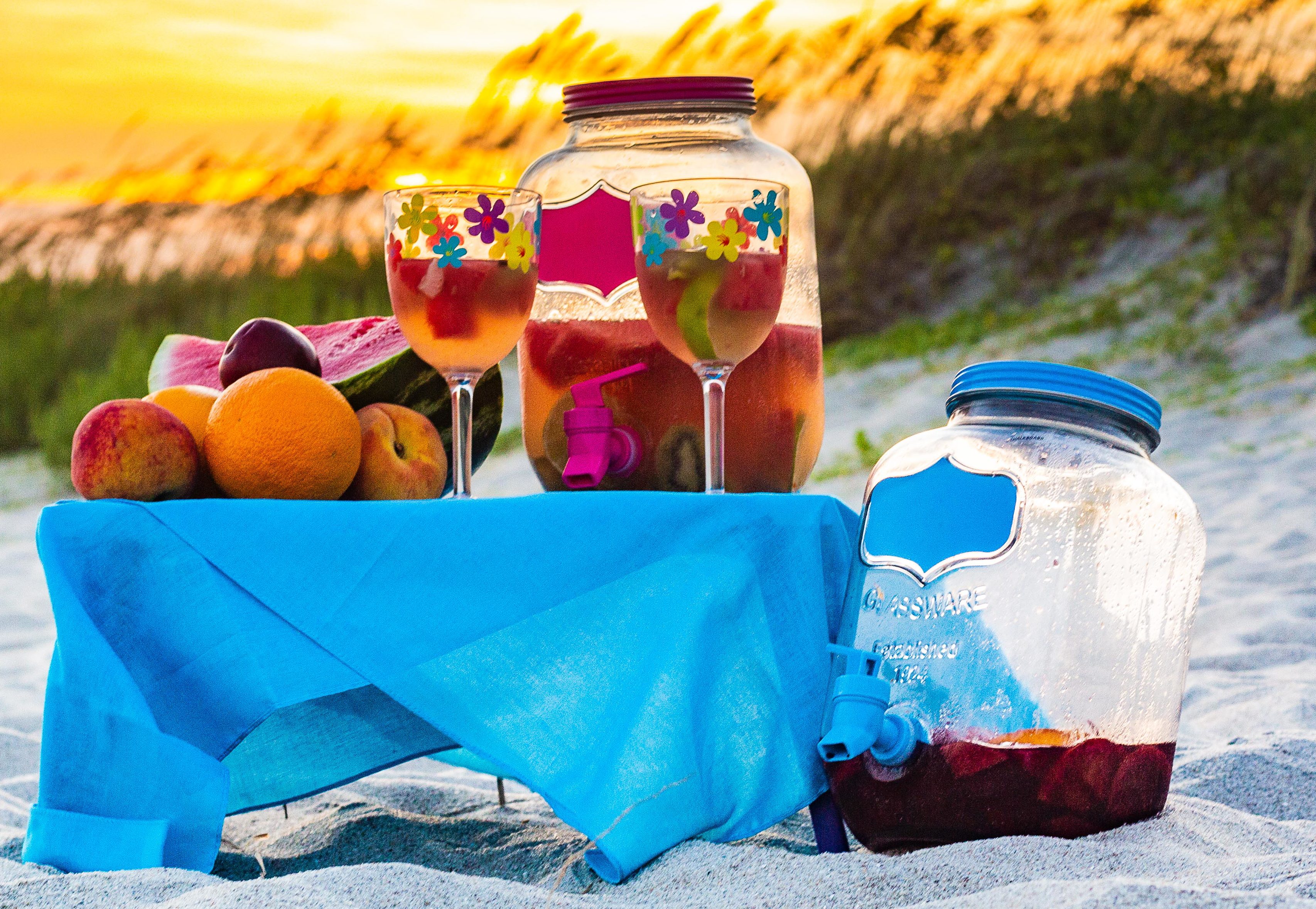Sangria Adventures

The light fruity drink, perfect for Summer
STORY and photo by Jeff Stites
With summer in full swing, I thought we’d take a look at sangria this month. It’s cold and fruity and refreshing, and perfect for entertaining because it’s easy to make in good-sized batches. I’m a fan of sangria, but have never tried making it myself, so join me as I dive into learning about one of the oldest mixed drinks known to man.
One of the first things I learned about sangria is that it’s completely free-form. Sangria, named after the Spanish word for blood (because of the color), or maybe going all the way back to the Sanskrit term for sugared wine, is simply wine mixed with a little sugar and whatever fruit happened to be laying around. There are no rules in sangria. Well, unless you live in the European Union where there are rules for everything. The EU requires sangria to be produced in Spain and fall within a certain alcohol content range and a few other silly things. But we are not in the EU so your sangria can be whatever you like. It’s great to be an American, isn’t it?
Sangria became popular in Spain as soon as the alcohol-free Moors were kicked out and it spread to the Caribbean and the British colonies of North America. For some reason, it fell out of favor soon after independence, but after it was served at the Spain pavilion during the 1964 World’s Fair in New York, it took off again in the States. You can even buy pre-made sangria at the grocery store now, but don’t.
Making sangria at home is easy and fun. All you need is wine — red is traditional but white is just as good — sugar and fruit. You can add other things, like liqueur or brandy to make it a little stronger, or juice, club soda or Sprite to make it a little lighter. You can chill it or not, as you like, but it needs to sit a couple hours at least for the fruit to properly flavor the wine. The waiting truly is the hardest part.
The fruit you use is up to you. Are you sensing a theme here? Use whatever you like or whatever is looking good at the time you make your sangria. Citrus fruits like oranges, lemons and limes were popular in Spain, but tropical fruits like pineapples, kiwis and mangoes make for a great tropical sangria, and berries are wonderful if that’s what grows where you live. You want to cut up your fruit so the flesh comes into contact with the wine and they get all happy together over time.
I decided to make both red and white sangria, because why not, you know? I figured you could get away with using cheap wine since you’re just going to fill it up with fruit and sugar anyway, but then I though life’s too short to drink Sutter Home sangria, so I tried to get as authentic as possible. I’d read that Spanish sangria was traditionally made with rioja wine, something I’d never heard of before. I found one called Marques de Caceres at Lowes on sale for $13.99 so I snapped that up. I didn’t see any Spanish whites but there was a white blend from Portugal, called Anjos (and it as on sale) and it seemed like close enough, so I grabbed that as well.
I tried to go summer-y with my fruit selections, so I got watermelon, kiwi, strawberries and limes for the white, and peaches, plums, oranges, strawberries and limes for the red.
Next stop was the ABC store for some orange liqueur. I found a small bottle of Patron, but on my way, I passed a display of North Carolina liquors and saw something called Sun Dog Pink Lemonade made in Mount Pleasant. I wasn’t planning to add any liquor to the white sangria, but how could I resist that? I mean, it’s local and all, right? I’ll admit that the label sort of has “bad decision” written all over it, but I was hoping just a bit in the mix wouldn’t be a mistake.
As it turned out, it was definitely not a mistake. My white sangria tasted like summer in a glass with the Sun Dog adding a bit of brightness but not turning the concoction into a frat punch. Watermelons were a great choice for this, if I do say so myself, as their flavor infused the sangria with just the right amount of sweetness without being over-powering. I added a splash of Sprite to each glass after pouring to give the drink some bubbles and it worked nicely, but I don’t think I’d miss it if it weren’t there. All in all, a terrific success.
The red version was even better, I thought, though that may be because of my preference for red wine over white. The fruit and the little bit of sugar mellowed the acidity of the wine and made it terrifically easy-to-drink. There wasn’t one fruit that “made” the drink like the watermelon in the white sangria, but the combination seemed to work well. Eating the fruit from the empty red sangria glass was a treat.
I’m not including recipes for my sangrias because I feel that would destroy the best feature of sangria—freedom. Your sangria should be all about what you like and what you find. Make the wine as dry or sweet or you like, use whatever fruit makes you happy, and add alcohol or not to your heart’s content. I will say I made my sugar into simple syrup by combining it with equal amounts of water over heat until it all dissolved and I cut my fruit up fairly small to increase its surface area in contact with the wine.
But even these things are entirely up to you. The only rule is to not follow any rules. Except maybe to make sure you eat the fruit.











Leave a Reply